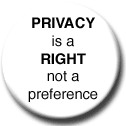11 May 1997: IBM's Deep Blue Defeats Garry Kasparov
00:01
Garry Kasparov playing Deep Blue in 1997.
Image source: Wikipedia / IBM
Image source: Wikipedia / IBM
Via Wikipedia.
The computer system dubbed "Deep Blue" was the first machine to win a chess game against a reigning world champion (Garry Kasparov) under regular time controls. This first win occurred on February 10, 1996, and Deep Blue - Kasparov, 1996, Game 1 is a famous chess game. However, Kasparov won 3 games and drew 2 of the following games, beating Deep Blue by a score of 4–2. The match concluded on February 17, 1996.More here.
Deep Blue was then heavily upgraded (unofficially nicknamed "Deeper Blue") and played Kasparov again in May 1997, winning the six-game rematch 3.5–2.5, ending on May 11th. The final game is at Deep Blue - Kasparov, 1997, Game 6. Deep Blue thus became the first computer system to defeat a reigning world champion in a match under standard chess tournament time controls.
The project was started as "ChipTest" at Carnegie Mellon University by Feng-hsiung Hsu; the computer system produced was named Deep Thought after the fictional computer of the same name from The Hitchhiker's Guide to the Galaxy. Hsu joined IBM in 1989 and worked with Murray Campbell on parallel computing problems. Deep Blue was developed out of this. The name is a play on Deep Thought and Big Blue, IBM's nickname.
The system derives its playing strength mainly out of brute force computing power. It is a massively parallel, 30-node, RS/6000, SP-based computer system enhanced with 480 special purpose VLSI chess chips. Its chess playing program is written in C and ran under the AIX operating system. It was capable of evaluating 200,000,000 positions per second, twice as fast as the 1996 version. In June 1997, Deep Blue was the 259th most powerful supercomputer, although this did not take into account Deep Blue's special-purpose hardware for chess.









0 Comments:
Post a Comment
<< Home